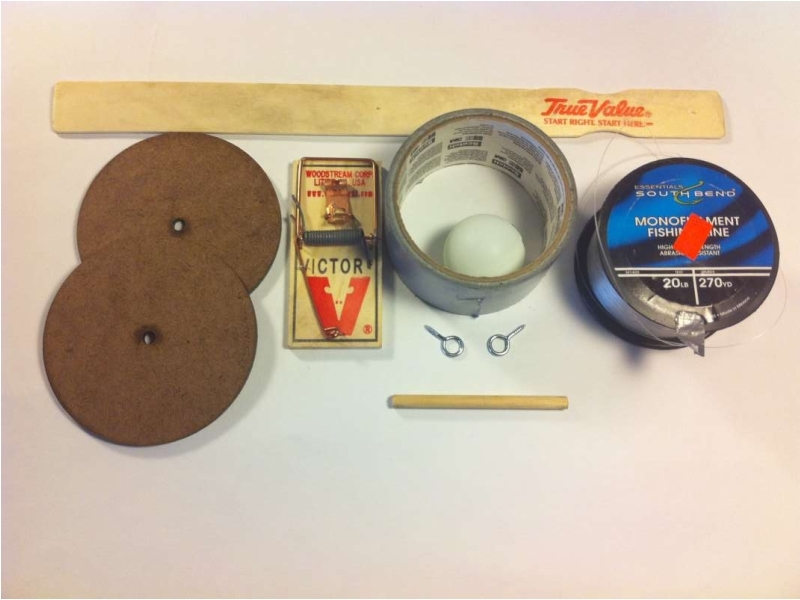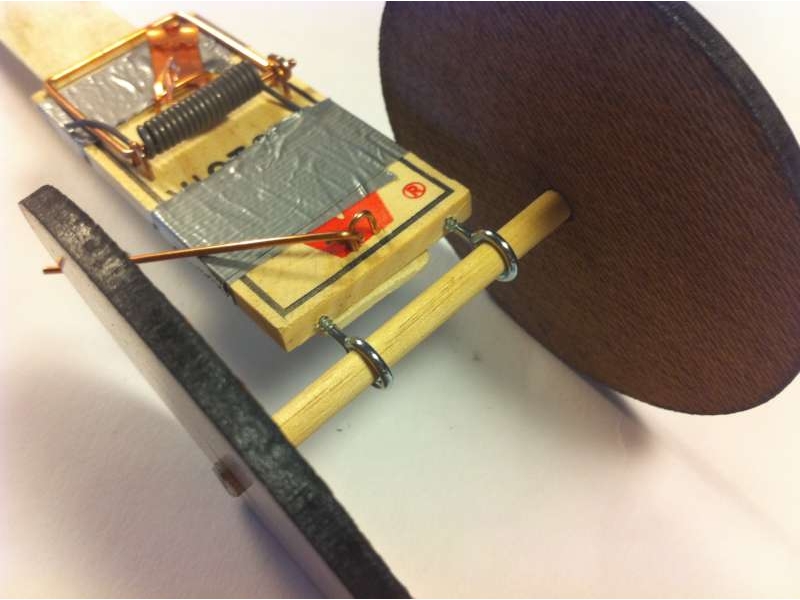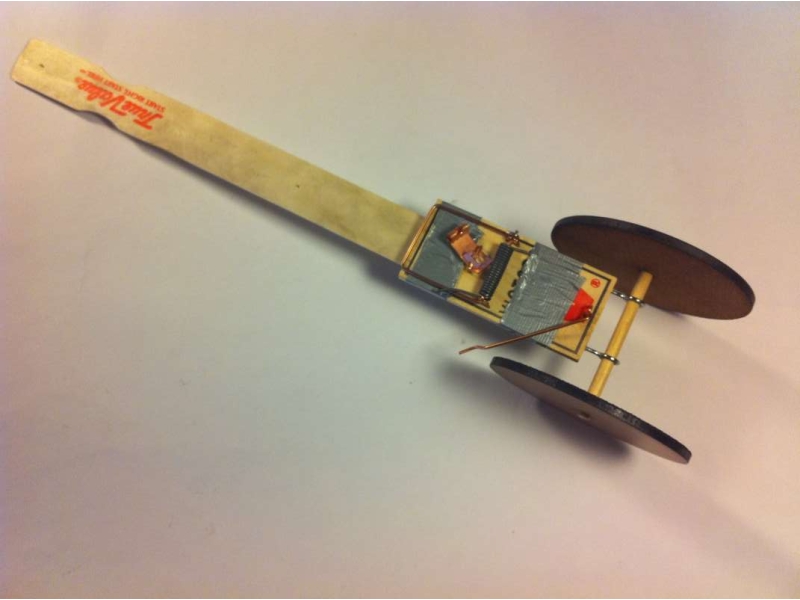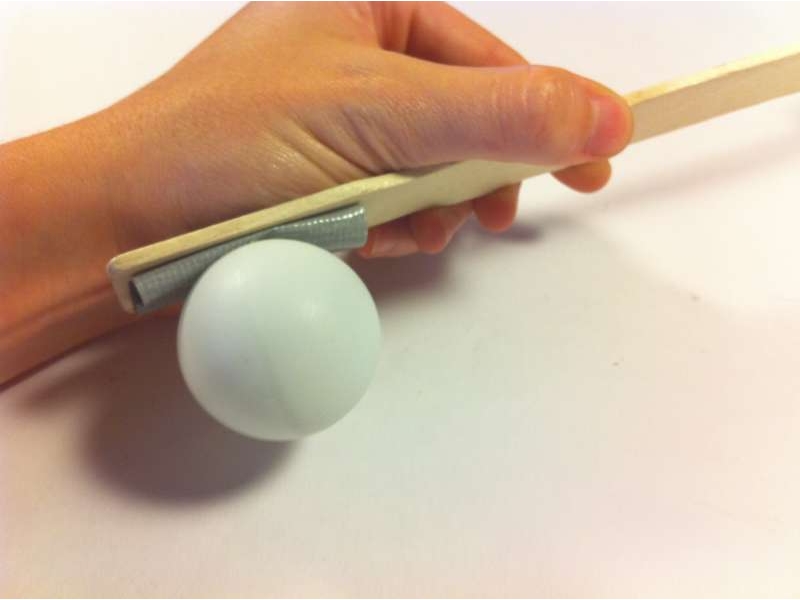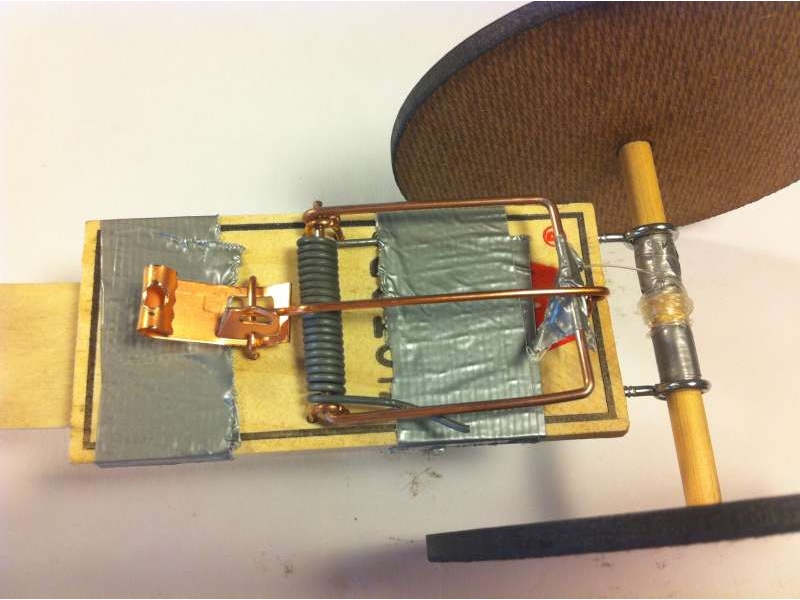I built about 60 of these simple kits to show people how to make and race mousetrap-powered cars at two events run by artist Aki Sasamoto, co-director of Culture Push. The first was a DOING workshop where I taught a small group of 10 professionals from other fields. The second was a larger-scale public event called Storm Your Brain, held with 100 people in attendance at the Whitney Museum as part of the Biennial. This is a fun project with just a few simple parts that just about anyone can make.
Projects from Make: Magazine
Mousetrap-Powered Car
Power a car with laser-cut wheels using a torsion spring.



